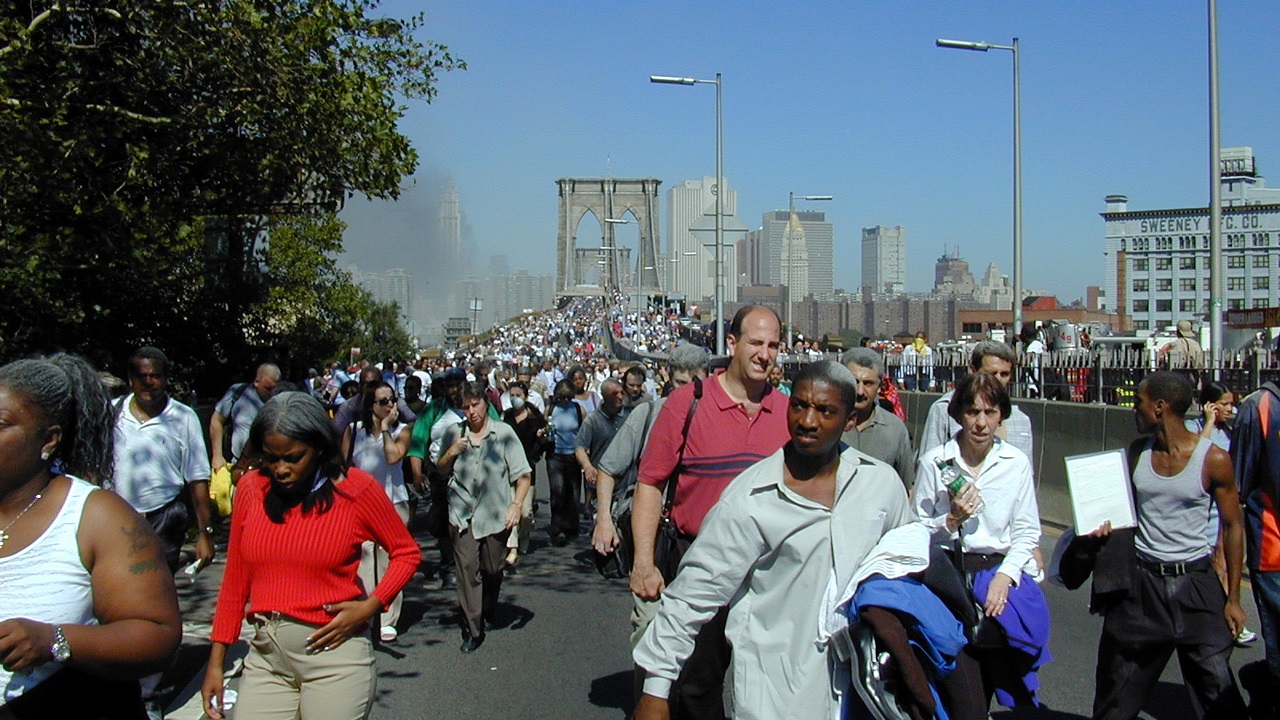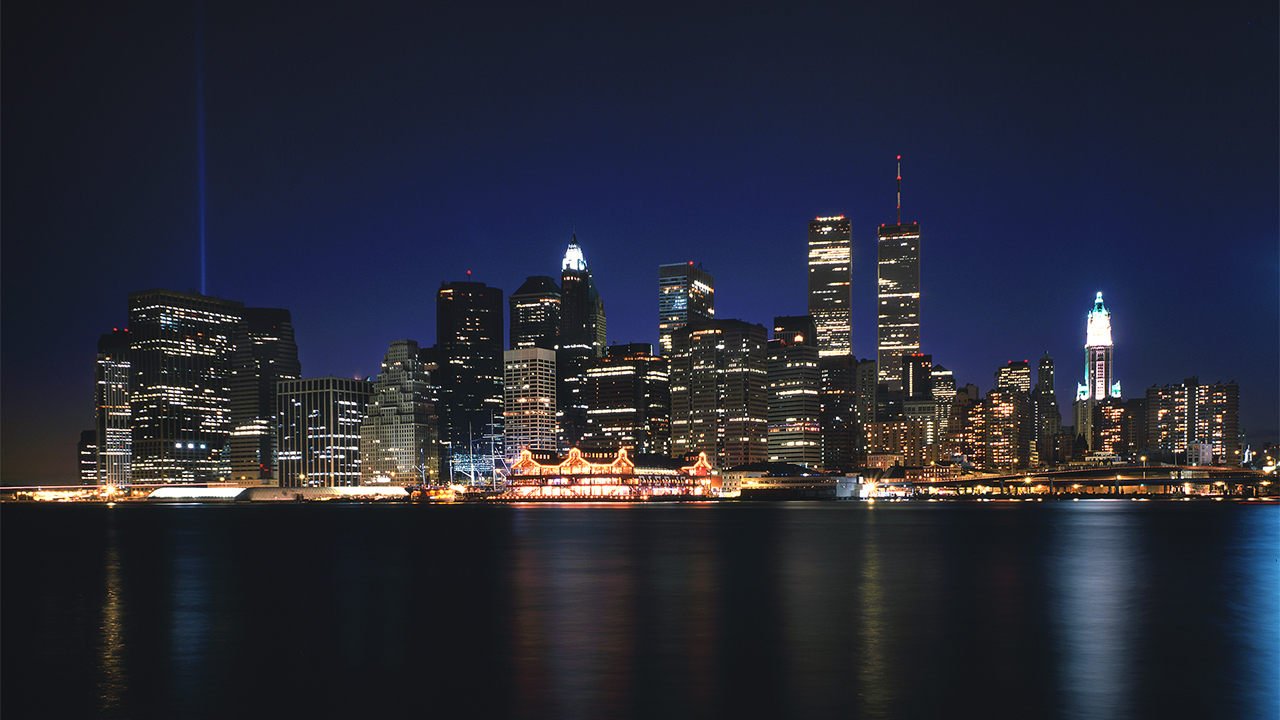Make a donation to the museum
World Trade Center History
The Twin Towers were the centerpieces of the World Trade Center complex. At 110 stories each, 1 WTC (North Tower) and 2 WTC (South Tower) provided nearly 10 million square feet of office space for about 35,000 people and 430 companies. They were the tallest buildings in New York City, and for a brief period upon their completion, they were the tallest buildings in the world. They attracted roughly 70,000 tourists and commuters every day.
The North Tower rose 1,368 feet—1,730 feet with a large antenna—and the South Tower stood 1,362 feet high. On a clear day, views extended 45 miles from the top of the towers in every direction—far enough to see all five New York City boroughs, New Jersey, and Connecticut.
The towers were massive. Each weighed more than 250,000 tons, contained 99 elevators, and had 21,800 windows. Each floor was an acre in size, and there was enough concrete in the towers to build a sidewalk from New York City to Washington, D.C. The complex even had its own zip code: 10048.
The two towers were surrounded by five other buildings that comprised the WTC complex. The Port Authority of New York and New Jersey had a police desk in 5 WTC, while 3 WTC was a hotel with office space.
The Twin Towers were completed in 1973, though tenants began to arrive in December 1970. The other buildings were built over the next 14 years.
In February 1993, terrorists with links to an Islamist extremist group detonated explosives in a van parked underneath the WTC. Six people were killed and thousands were injured.
Interactive Timelines
Explore interactive timelines chronicling the events of the 1993 World Trade Center bombing, 9/11, and the recovery effort at Ground Zero.

Primary Sources
These primary resources include speeches, executive orders, legislative acts and debates, and government reports.

